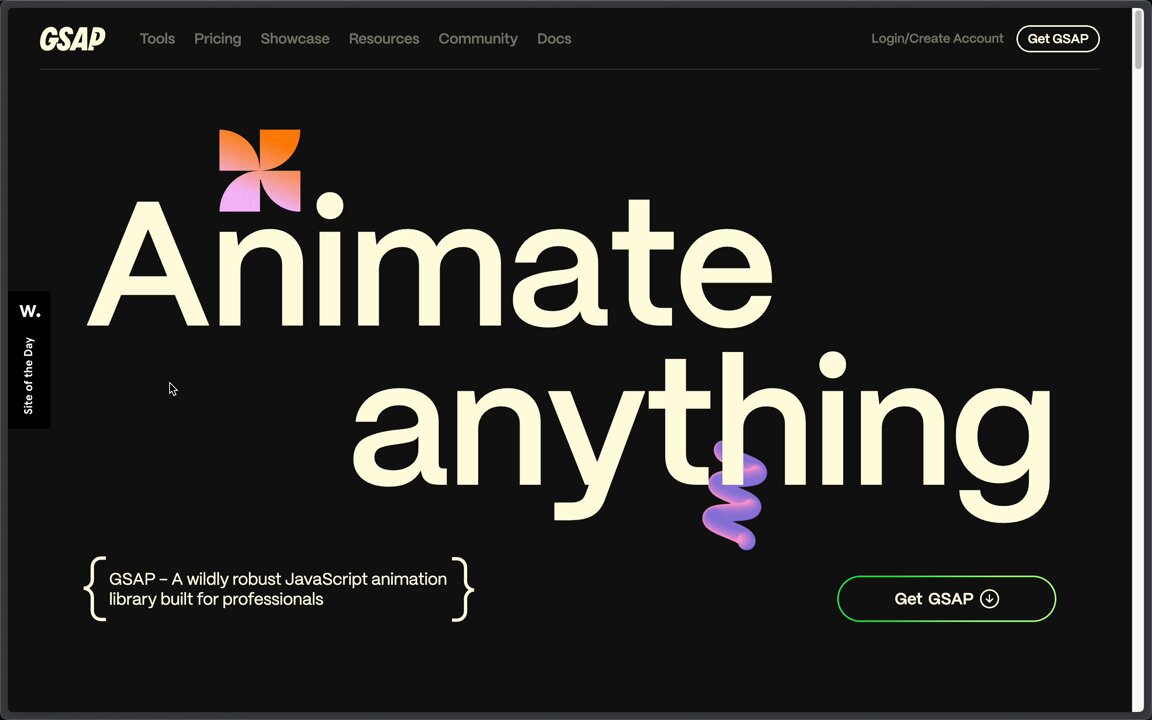In this blog we are going to see about GSAP in detail with some example in it
Introduction
In the realm of web development, creating captivating animations and interactive elements is crucial for engaging user experiences. One of the most powerful tools in a developer's arsenal for achieving this is the GreenSock Animation Platform (GSAP). In this comprehensive guide, we'll delve into the world of GSAP, exploring its features, syntax, and best practices for creating stunning animations on the web.
What is GSAP?
GSAP, short for GreenSock Animation Platform, is a robust JavaScript library designed for creating high-performance animations on the web. Unlike CSS animations or transitions, GSAP provides developers with unparalleled control and flexibility, allowing for the creation of complex, fluid animations with ease. With its rich feature set and intuitive syntax, GSAP has become a staple in the toolkit of many web developers and designers.

Key Features of GSAP
Performance: GSAP is engineered for optimal performance, ensuring smooth animations even on devices with lower processing power.
Cross-browser Compatibility: GSAP eliminates the headaches of dealing with browser inconsistencies, providing consistent animation results across different platforms.
Tweening: GSAP's tweening engine allows developers to animate virtually any numeric property of HTML elements, CSS styles, SVG attributes, and more.
Plugins: GSAP offers a wide range of plugins for specialized animations, such as scrolling, physics-based motion, and 3D effects.
Sequencing and Timelines: GSAP enables precise control over animation sequences and timelines, making it easy to choreograph complex motion sequences.
Easing Functions: GSAP provides a plethora of easing functions to add natural motion effects to animations, including ease-in, ease-out, and custom bezier curves.
Getting Started with GSAP
To start using GSAP in your web projects, you can include it via a CDN or install it using npm. Here's a basic example of how to include GSAP in an HTML document:
<!DOCTYPE html>
<html lang="en">
<head>
<meta charset="UTF-8">
<meta name="viewport" content="width=device-width, initial-scale=1.0">
<title>GSAP Example</title>
<script src="https://cdnjs.cloudflare.com/ajax/libs/gsap/3.9.1/gsap.min.js"></script>
</head>
<body>
<!-- Your HTML content here -->
</body>
</html>
Creating Animations with GSAP
Now, let's dive into creating a simple animation using GSAP. In this example, we'll animate the opacity and scale of a div element:
<!DOCTYPE html>
<html lang="en">
<head>
<meta charset="UTF-8">
<meta name="viewport" content="width=device-width, initial-scale=1.0">
<title>GSAP Animation Example</title>
<script src="https://cdnjs.cloudflare.com/ajax/libs/gsap/3.9.1/gsap.min.js"></script>
<style>
#box {
width: 100px;
height: 100px;
background-color: blue;
}
</style>
</head>
<body>
<div id="box"></div>
<script>
// Animating the box with GSAP
gsap.to("#box", { duration: 1, opacity: 0.5, scale: 1.5 });
</script>
</body>
</html>
In this code snippet, we use GSAP's to() method to animate the opacity and scale properties of the #box element. The animation will last for 1 second, gradually changing the opacity to 0.5 and the scale to 1.5.
Conclusion
GSAP empowers developers to create captivating animations and interactive elements that enhance user experiences on the web. With its powerful features, intuitive syntax, and stellar performance, GSAP has become the go-to choice for animating everything from simple UI elements to complex motion graphics. By mastering GSAP, you'll unlock a world of creative possibilities in web animation. Start experimenting with GSAP today and elevate your web projects to new heights!
Connect with us:
Hashnode: https://hashnode.com/@Nehal71
Twitter : https://twitter.com/IngoleNehal

